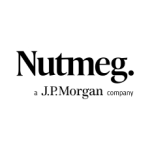New Investment ISAs see record inflows
The latest HMRC figures for the 2013/14 tax year show that although there were fewer subscriptions into ISAs overall compared with the previous tax year, numbers into Stocks & Shares ISAs have grown significantly. We take a closer look at the numbers as well as find out which investments have been the winners from this shift in ISA behaviour and what this could mean for the New ISA going forward.
Low savings rates set the scene
With the Bank of England base rate held for another month at 0.5%, whatever the speculation around future interest rate rises, the facts remain that this record low is now in its 66th consecutive month and the savings rates available from Cash ISAs are still at pitifully low levels.
Figures released at the end of August by the Bank of England showed the rates on Cash ISAs have fallen significantly since 2012 and the introduction of the Funding for Lending Scheme. In July 2012, Cash ISAs offering a bonus paid an average rate of 2.57%% whilst today they pay just 1.18% on average – less than half what they used to. For Cash ISAs not paying bonuses the rate has fallen from 1.41% to 0.86% over the same period, a fall of almost 40%.
Fixed rates failing to inspire
And it’s not only easy access accounts that are failing to inspire savers. Top one and two year fixed rate Cash ISAs are paying around 1.70% and 2.0% respectively whilst leading 3 year fixed rate deals top 2.50% and for a 5 year term you might get 2.80%. The good news is that with inflation currently running at 1.6%, all of these fixed rates are inflation beating, but the ISA figures show us that this is clearly not enough for savers and investors looking to the longer term.
ISA numbers down, Investment ISAs up
The end of financial year ISA statistics from HMRC show that overall subscription numbers into ISAs has fallen year on year. Between 6th April 2013 and 5th April 2014 there were a total of 13,473 ISA subscriptions, down from 14,606 made during the previous tax year. With such historically low savings rates it is hardly surprising that the number of ISAs is down with Cash ISAs historically being the more popular of the two ISA options.
However, although the number of ISAs has fallen, the above statistics show that savers are putting more money away than ever before. The average amount invested in a Cash ISA rose from £3,501 last year to £3,704 this year, and the amount saved into Stocks and Shares ISAs increased from £5,629 to £6,163 over the same period, the latest ISA subscriptions revealing more investors have been allocating towards stocks and shares than buying into cash.
Savers put record amount in stocks and shares ISAs
According to the latest figures from the Office of National Statistics, the total assets invested into Stocks and Shares ISAs were a record £18.4bn in the 2013-14 tax year with £38.8bn in Cash ISAs, a change in attitude from 2012-13 when £40.9bn was subscribed into cash ISAs and £16.5bn was held in Stocks and Shares ISAs. This equates to an 11.5% increase on the investment side versus a 5.4% increase for Cash ISAs, over double the increase.
The environment of low cash ISA rates failing to meet the needs of many ISA subscribers has boosted stocks and shares ISAs to a record year of investment and the increase in average subscriptions to record levels shows not only the importance that UK savers and investors put on tax-free ISAs, but also that they are increasingly realising that this valuable tax break can be better used.
New ISA changes mean the trend is likely to continue
Since 1st July 2014, the key changes to ISAs are as follows:
- All existing ISAs become New ISAs
- New ISA allowance of £15,000
- Allocate up to the full allowance in either cash or stocks & shares (investments), or a mixture of both
- Freedom to transfer from cash to stocks & shares and vice versa (Stocks & Shares ISA to Cash ISA previously not permitted)
The continued poor savings rates and improved confidence in the markets, combined with the higher ISA allowance and greater transfer flexibility suggest that this trend will continue throughout the current tax year and beyond.
Confirmation that savers are looking to investments
Indeed, those who have half an eye on a potential interest rate rise may not want to lock into a fixed rate ISA in the short-term and what these latest figures confirm is that more savers are looking towards investments. As many banks cut their rates to deter attracting new savers and slash rates for existing customers coming to the end of their initial deal, it is the shorter term rates that are proving most uncompetitive as the prevailing market brings with it an ISA dilemma for many savers – either lose money in real terms from a savings account, or take on more risk.
This difficult question of taking on more risk to try and combat the effects of inflation and realise competitive returns over and above inflation is one which more and more savers are facing. Obviously putting your capital at risk is something which you should consider very carefully indeed, particularly if you are considering this for the first time with some of your Cash ISA savings or new ISA money.
Our Top 5 most popular plans for ISA investors
Here at Fair Investment Company we have also seen a rise in the number of investment plans being used by ISA savers and investors on the back of a very busy summer. With this in mind, here is our Top 5 investment plan selections based on our most popular plans with both existing and new investors:
- 5.40% fixed income, monthly payments with capital at risk based on the performance of the FTSE 100 Index – Investec Enhanced Income Plan » This is our most popular income investment and the best selling investment for those using the full £15,000 New ISA allowance
- 7.20% fixed income, monthly payments with capital at risk based on the performance of five FTSE 100 shares – Meteor FTSE 5 Monthly Income Plan » This is our second most popular income investment.
- Potential yield up to 9% each year with quarterly payments, capital at risk based on the performance of four FTSE 100 shares – Focus FTSE 4 Quarterly Income Plan » This is one of our most popular investment plans overall.
- Potential 10.25% annual growth (not compounded) and early maturity from year 2 onwards, capital is at risk based on the performance of the FTSE 100 Index – Investec Enhanced Kick Out Plan » This is best selling growth investment plan and the most popular investment for ISA transfers.
- Potential 7.50% annual growth (not compounded) even if the FTSE falls up to 10%, capital at risk based on the performance of the FTSE 100 Index – Investec Defensive Kick Out Plan » The third entrant from Investec offers a defensive element and is one of our most popular investment plans overall.
Don’t miss out
Recent research suggests that more than one in every four adults in the UK (26%*) is paying too much tax on their savings and investments. With as many as 12.5 million adults failing to make use of a tax-efficient ISA with their hard earned money, they could be losing out by paying tax unnecessarily. Putting money in an ISA is one of the simplest things to do to protect your money from the taxman and with the new ISA rules resulting in an increased allowance and increased flexibility, making sure you don’t miss out should be a top priority.
Click here for more information about the Investec Enhanced Income Plan »
Click here for more information about the Meteor FTSE 5 Monthly Income Plan »
Click here for more information about the Focus FTSE 4 Quarterly Income Plan »
Click here for more information about the Investec Enhanced Kick Out Plan »
Click here for more information about the Investec Defensive Kick Out Plan »
* NFU Mutual, June 2014.
No news, feature article or comment should be seen as a personal recommendation to invest. Prior to making any decision to invest, you should ensure that you are familiar with the risks associated with a particular investment. If you are at all unsure of the suitability of a particular investment, both in respect of its objectives and its risk profile, you should seek independent financial advice. Tax treatment of ISAs depends on your individual circumstances and is based on current law which may be subject to change in the future.
These are structured investment plans that are not capital protected and are not covered by the Financial Services Compensation Scheme (FSCS) for default alone. There is a risk of losing some or all of your initial investment due to the performance of the FTSE 100 Index or shares listed within the Index. There is also a risk that the company backing the plan or any company associated with the plan may be unable to repay your initial investment and any returns stated. In addition, you may not get back the full amount of your initial investment if the plan is not held for the full term. As share prices can move by a wide margin, plans based on the performance of shares represent higher risk investments than plans based on the FTSE 100 Index as a whole. The past performance of the FTSE 100 Index or shares listed within the Index is not a guide to their future performance.
Tags





